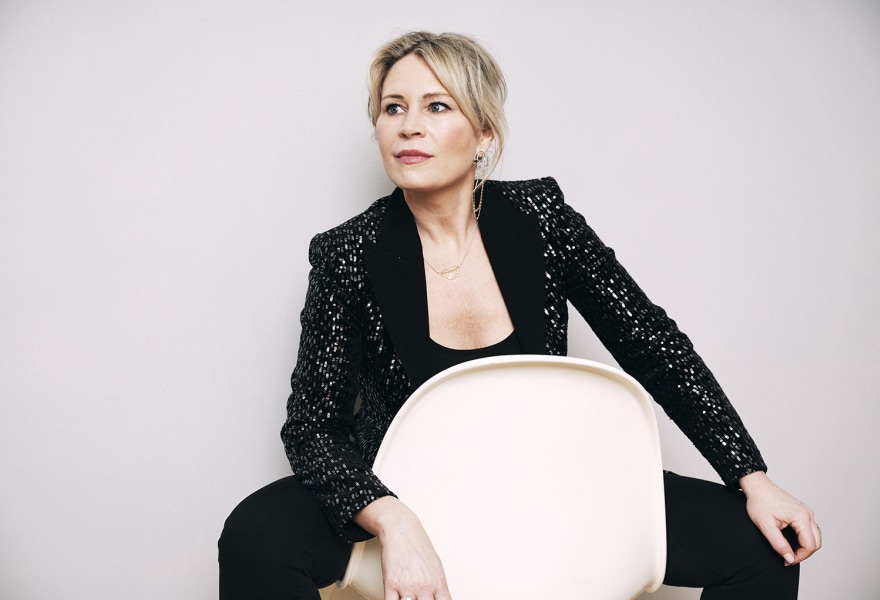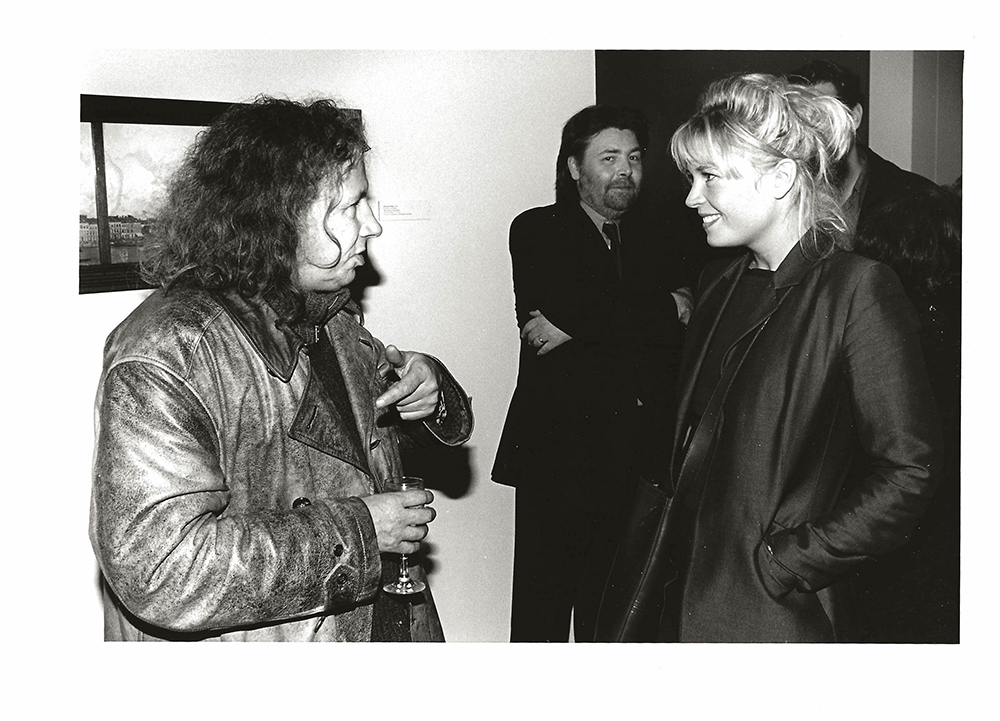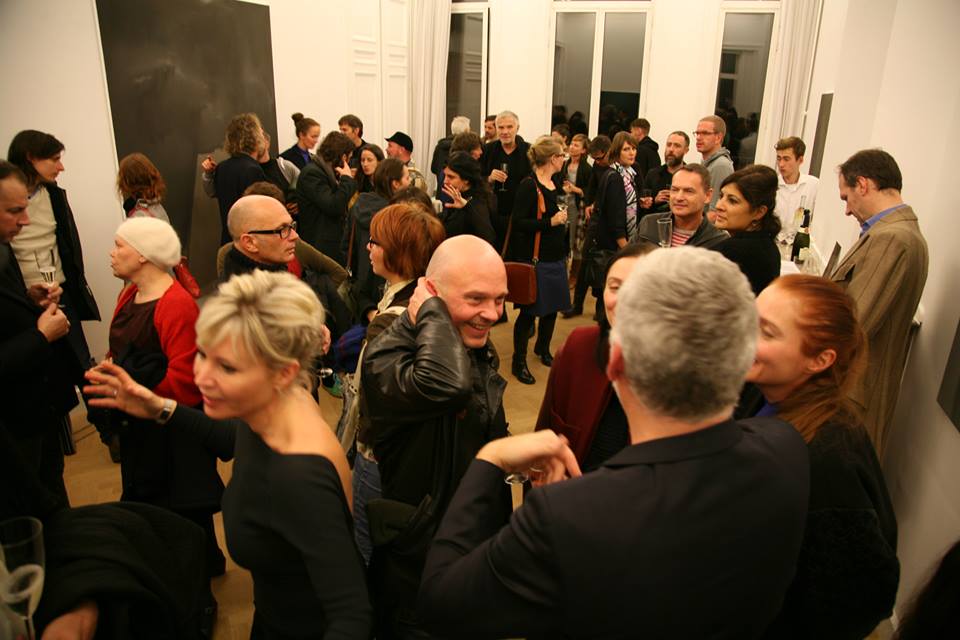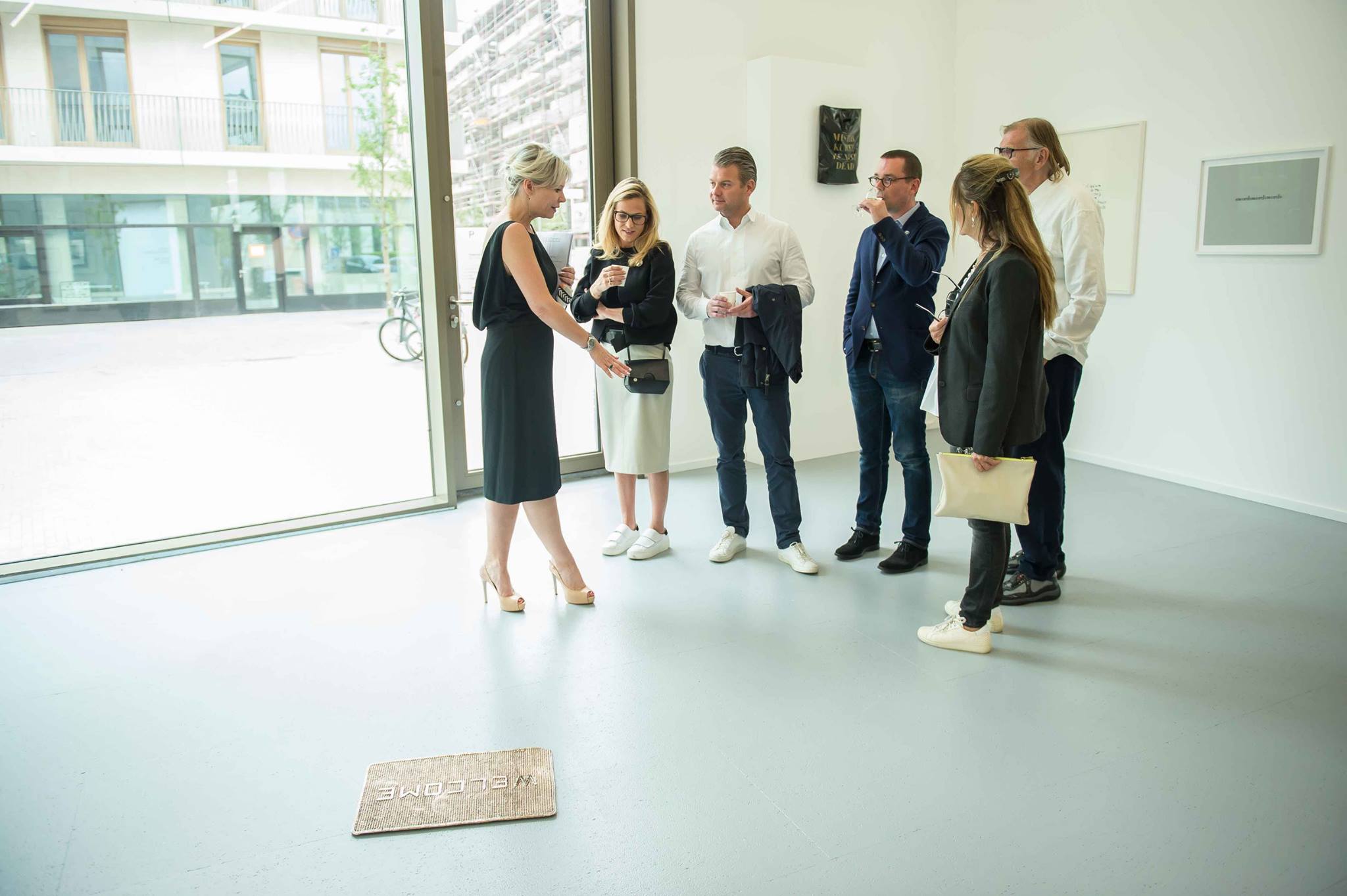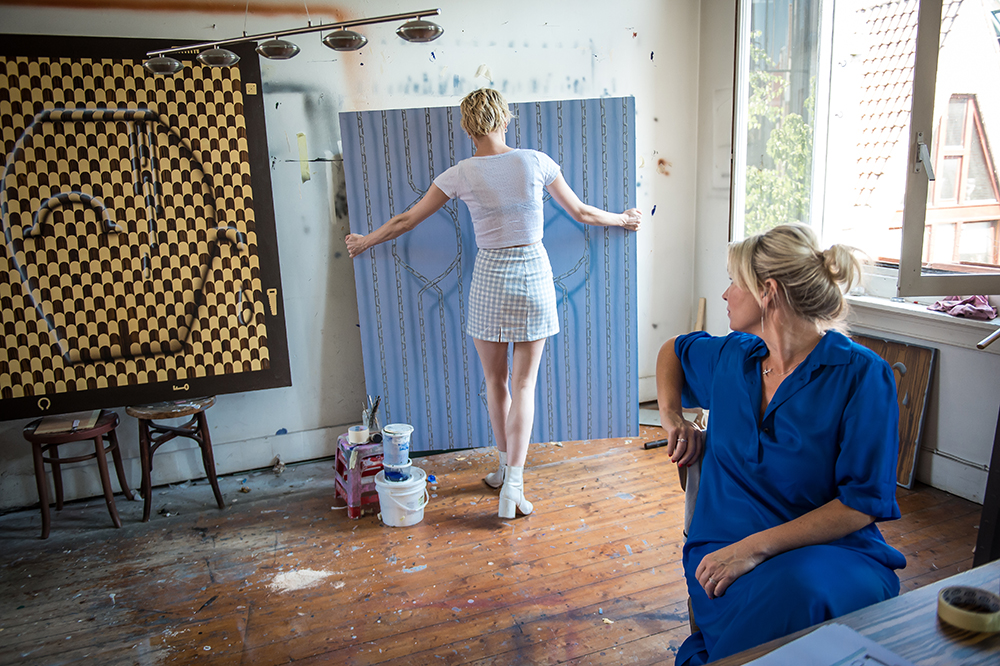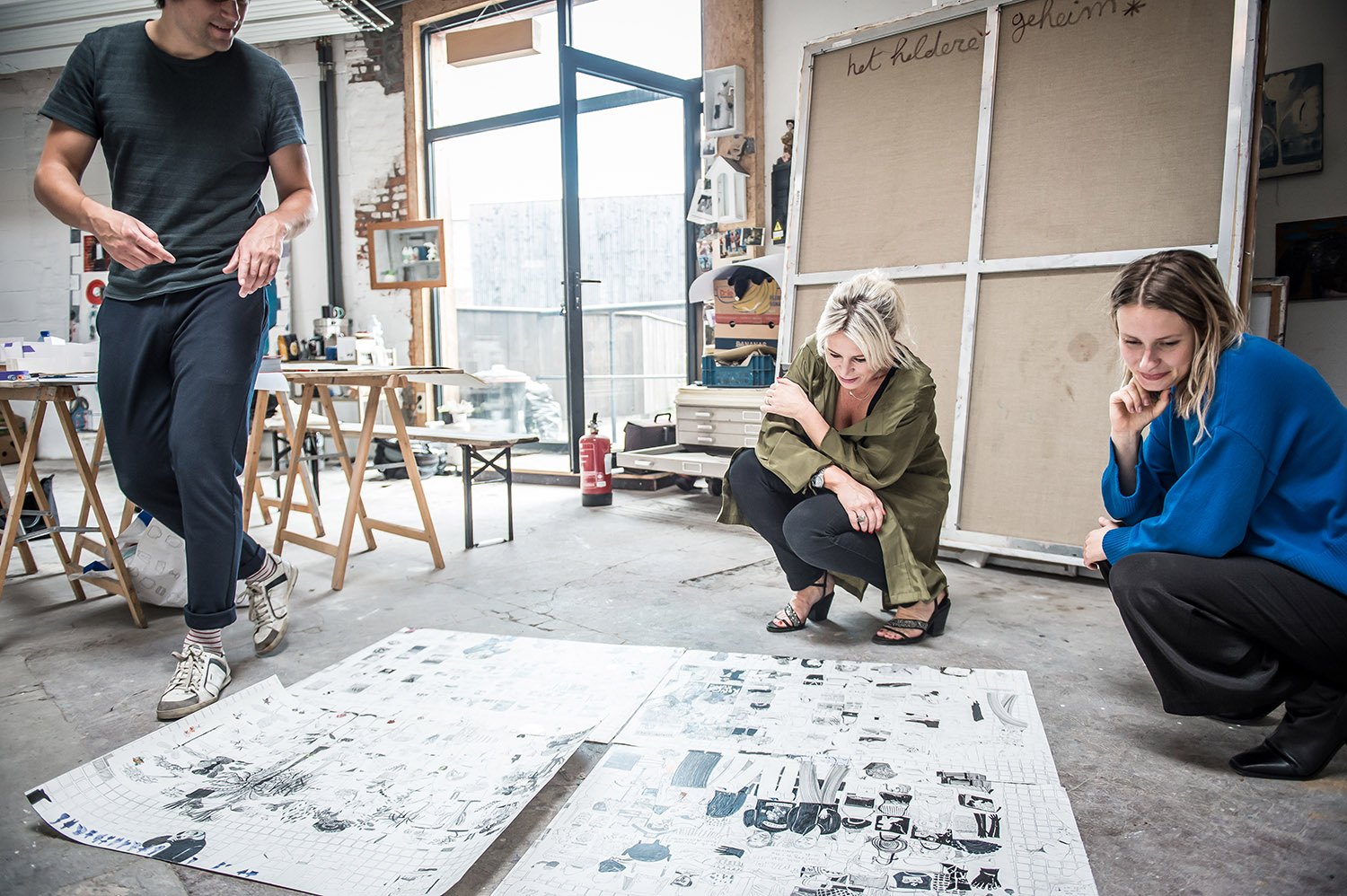03 september 2021, Oscar van Gelderen
The gallery of... Sofie Van de Velde
We’re two generations of gallerists: Galerie Ronny Van de Velde and Gallery Sofie Van de Velde. My father started his gallery in the 70s at a young age. He began by selling curios like comic strips and album covers, and this led him to develop a taste in art. At the time, my father was a visionary gallerist. He showed very early work by Gerhard Richter, Jef Koons, Braco Dimitrijević, Panamarenko and others. He also organised legendary exhibitions with work by Man Ray, Marcel Duchamp, Marcel Broodthaers. Over the last twenty years, his focus has been on the secondary market. He still researches collections, discovers artists overlooked and ‘underappreciated’ by the art world and shows their work here and now within a new framework. He searches for and finds unique works of art, often collects them personally and sells them later on with a profit.
How did you become interested in the art world?Art has been part of my life for as long as I can remember. It was there from the moment I was born. From a young age, there were always artists in our home: Fred Bervoets, Pierre Alechinsky, later also Nam June Paik and so many others. To us, art is what food and drink are to everyone else. Art was always there, it was a language in which we communicated with the entire family. We talked in images, in books, in film fragments. It was not always clear to those who were not part of our family.
How did you first get involved in a gallery? Or did you start your own gallery right away?
I worked in my parents’ gallery when I was studying. At the age of 17, I began working there for around two years as part of my trade studies. I also worked in the gallery during school breaks or when they needed an extra hand. I have a long career in the social sector behind me: I did independent research into inappropriate behaviour and group processes in politics because I’m absolutely fascinated by interpersonal relationships. Ten years ago, I began helping my parents in their gallery when my father became ill (and has fortunately recovered since). During the twenty years prior to my return to the art world, I stayed up to date on developments in the art world and flew to exhibitions and auction houses on the weekends. But I wanted to work more with young artists, which is why I started my own gallery in 2012, with a focus on contemporary young artists, established mid-career artists and estates.
How would you describe your gallery’s profile?
We’re an Antwerp gallery with a focus on collaboration, but with an eye to and contact with the entire world. Together with the PLUS-ONE Gallery owned by Jason Poirier, we’re established at a shared location in Antwerp (Nieuw Zuid), but recently opened a second gallery in the fashionable Zuid area. We share our networks and back office, but each have our own unique identity. Jason’s father and my parents used to work together closely in the past. We've both grown up with rich experience in the art world. Like me, Jason also choose to spend twenty years gaining experience in a different world. This gave us the possibility to distance ourselves and to open our galleries with a contemporary vision – adapted to today's needs and interests. Our efforts are aimed at our partnerships with thirty galleries around the world. We believe in collaboration, which enables artists from our network to also showcase their work in other galleries. This is something we actively pursue. We deliberately choose galleries that are a good match for the style of the artist in question and are willing to share, just like we do. Thanks to this approach, we won the ‘Most Innovative Gallery in Europe’ award in Basel in 2018.
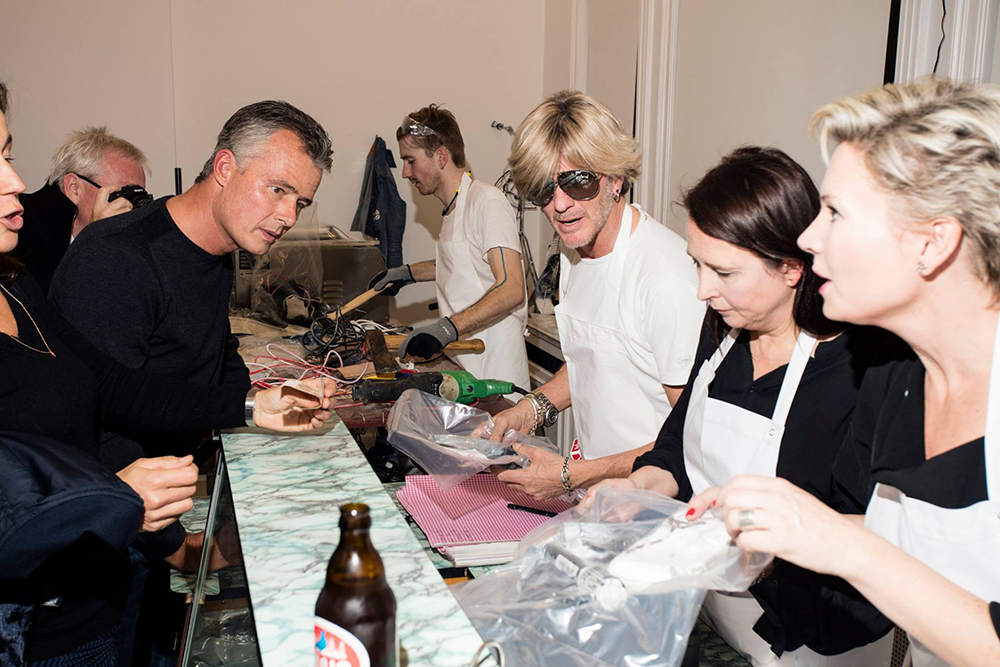
Performance door Joris Van de Moortel en A.F.Vandevorst ‘Slagerij Van de Velde’, Lange Leemstraat, 2015.
What do you love most about owning a gallery?
The best part is that, together with our artists, we can make a difference in their lives, in the progression of their career. This brings me great joy: spending time with artists, facilitating opportunities, exhibiting artists at a diverse range of locations worldwide, looking for – and finding – collectors who enjoy an artist's work.
Which national/international galleries share your philosophy?
There are quite a few. I work together very closely with the Estates together with Victoria Miro, Konrad Fisher, Mehdi Chouakri and Sean Kelly. For our younger talents, we work with Vanessa Carlos Ishikawa, Nino Mier Gallery, Vacancy Shangai, Cornelia Grassi, Stevenson and others. Every gallery has its own philosophy and identity. All of them have a distinct programme and are committed to partnerships. They are willing to share, don’t feel easily threatened and brainstorm with us about possibilities. Our focus with these galleries is on a long-term relationship.
In a perfect world, which artist would you like to represent?
Oh, I have an entire bucket list! But collaboration with an artist is a highly process-based and nuanced undertaking. There are so many aspects that need to align on so many different levels. First and foremost, the artist’s work must add to what is already out there, with a link to the contemporary temporal experience. There also needs to be a mutual desire to make a difference and embark on a joint journey. This requires trust, mutual respect for each other’s skills and individuality. Finally, I figure out early on whether or not I can personally make a difference in his or her story. There are a lot of really good artists in the world who are already represented by well-established galleries. The question is always what can we add to their story from our standpoint? The answer is often a listening ear, together adding new punctuation to their often established narrative and offering new perspectives.
What has changed in the art world since you first entered it?
Today’s art world is dramatically different than in the 1970s. To begin with, there were far fewer galleries at that time. It was a world based on knowledge and power, with only a few individuals possessing that knowledge. But in that sense, it was also simpler. Today’s art world is more nuanced and more democratic, but also less transparent as a result. As a gallery, our goal is to contribute to the transparency of this world. We want to remove obstacles by informing visitors with our team, being open 6 days a week and communicating openly online and in real life. The art world has become quite a bit more complex, but no less intriguing. I’m actually president of all gallery associations in Europe and a member of various consultative bodies. This lets us keep track of developments and get a feel for the types of challenges that will impact our business in the short and long term.
What/who do you collect personally?
Obviously, I collect work by the artists I represent: Bendt Eyckermans, Pieter Jennes, Charlyne Tyberghein, Charlotte Posenenske, Felix Declerq, Ilse D’Hollander, Willy De Sauter and others. I also have a number of historic works that symbolise the evolution my collection has undergone. I don’t sell these works because these are artists who have made the difference in art history (such as Goya). They remind me that collecting art is a passionate process.
Has the coronavirus pandemic changed your view of the art world?
We’re even more convinced of our vision. Since the coronavirus will make it difficult to travel for some time yet, we believe even more strongly in our collaborative approach: sharing experiences with artists and galleries around the world is more important than ever. During the pandemic, we have focused more on a two-track approach. We continue to promote the physical art experience by being open six days a week, but we are also active online on a large number of platforms. We’ve seized this crisis to engage in dialogue even more actively online with collections, collectors and our colleagues around the world. The world is becoming more fascinating and phased, but is also coming closer to Antwerp and we in turn are firmly planted in this fascinating art world from Antwerp!
See all artists represented by Gallery Sofie Van de Velde
